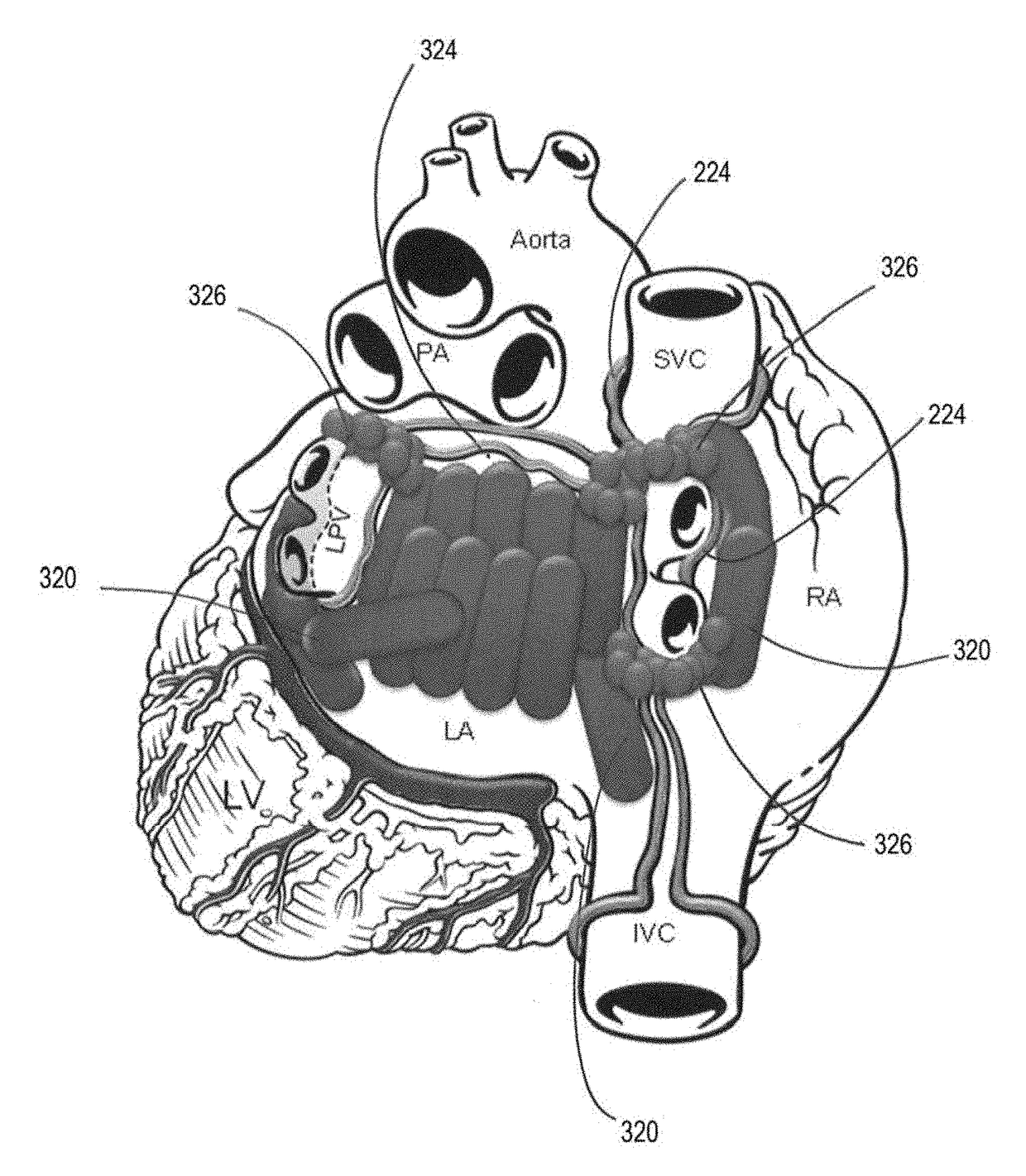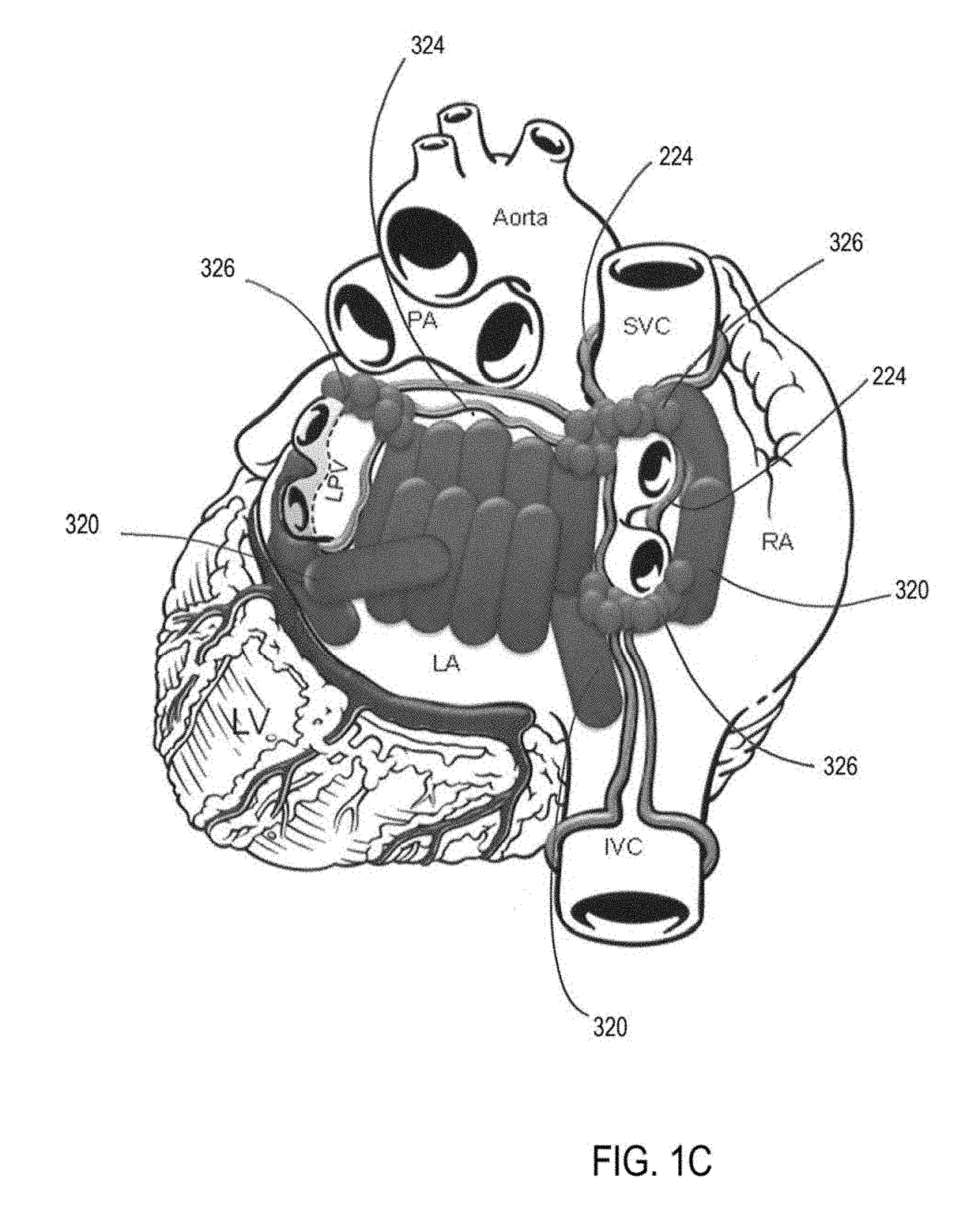Methods to prevent stress remodeling of atrial tissue
a stress remodeling and atrial tissue technology, applied in the field of therapeutic treatment of atrial tissue, can solve the problems of difficulty in creating a complete lesion pattern, variability in the transmission of energy throughout the target, application of energy to cardiac tissue, etc., and achieve the effect of reducing mechanical stress, reducing mechanical stress, and reducing the formation of at least one arrhythmia substra
- Summary
- Abstract
- Description
- Claims
- Application Information
AI Technical Summary
Benefits of technology
Problems solved by technology
Method used
Image
Examples
Embodiment Construction
[0041]Methods and devices described herein provide for creating an ablation or coagulation patterns to address regions of high stress in atrial tissue that are often caused by underlying medical conditions that adversely affect the heart and cardiac tissue such as obesity, hypertension, cardiomyopathy, etc.
[0042]The lesions can be made on an endocardial and / or on an epicardial surface. The coagulation pattern comprises any number of coagulation lesions that are contiguous such that the lesions overlap, intersect, and / or join. In one variation, the contiguous lesion forms a barrier to prevent any electrical signal from propagating through or across the lesion pattern. The techniques involved in creating a bi-atrial lesion pattern can be applied to other organs or structures of the body. Accordingly, unless specified otherwise, the methods and devices are not limited to use in cardiac structures.
[0043]The methods and devices described herein can be used with conventional approaches fo...
PUM
 Login to View More
Login to View More Abstract
Description
Claims
Application Information
 Login to View More
Login to View More - R&D
- Intellectual Property
- Life Sciences
- Materials
- Tech Scout
- Unparalleled Data Quality
- Higher Quality Content
- 60% Fewer Hallucinations
Browse by: Latest US Patents, China's latest patents, Technical Efficacy Thesaurus, Application Domain, Technology Topic, Popular Technical Reports.
© 2025 PatSnap. All rights reserved.Legal|Privacy policy|Modern Slavery Act Transparency Statement|Sitemap|About US| Contact US: help@patsnap.com



